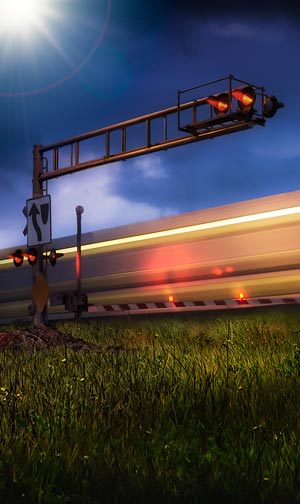Idaho Motorist Killed at Dangerous, Deadly, and Unguarded Union Pacific Crossing
(Shelley, Idaho – December 10, 2014)
The dangerous, deadly and unguarded crossing which was the site of one of the most horrible train/highway vehicle accidents in Idaho history caused another fatality last Wednesday morning at about 10:11 A.M., MST, when an 18-year-old Shelley, ID driver became the fifth fatality to occur at the crossing of Union Pacific Railroad tracks and Road 1450 North just east of Shelley.
According to Federal Railroad Administration, railroad-generated records, the crossing is still not equipped with any active warning devices. The crossing was the same as it was on January 27, 1984 when a Union Pacific train consisting of a single eastbound locomotive hauling 17 cars at an estimated speed of 50 mph struck a vehicle carrying 11 people, killing four and seriously injuring the other seven. The UPRR offered no narrative on the FRA report.
In Wednesday’s accident, Jonathan Adamson was transported via air ambulance to the Eastern Idaho Regional Medical Center in Idaho Falls, ID, where he passed away from the massive injuries he suffered when he attempted to cross UPRR tracks in his 2001 Chevrolet Silverado pickup truck at the cross the crossing when he was struck by a UPRR train. The crash was the fourth to occur there since FRA records began being kept in the 1970’s.
The crossing has barely enough storage space to fit an automobile, as Road 1450 North ends as it intersects with U.S. Highway 91, which parallels UP tracks through the area. Also known as Clinger Road, 1450 North is traversed by a daily average of eight trains at a maximum allowable speed of 40 mph.
It is virtually certain that if equipped with lights and gates this accident and the four preceding accidents would not have happened. Both Union Pacific and Operation Lifesaver know that lights and gates are the most effective type of protection at railroad crossings. Studies that have been conducted over fifty years ago confirm that lights and gates offer the ability to drastically reduce the number of vehicle/train accidents by as much as 96%.


